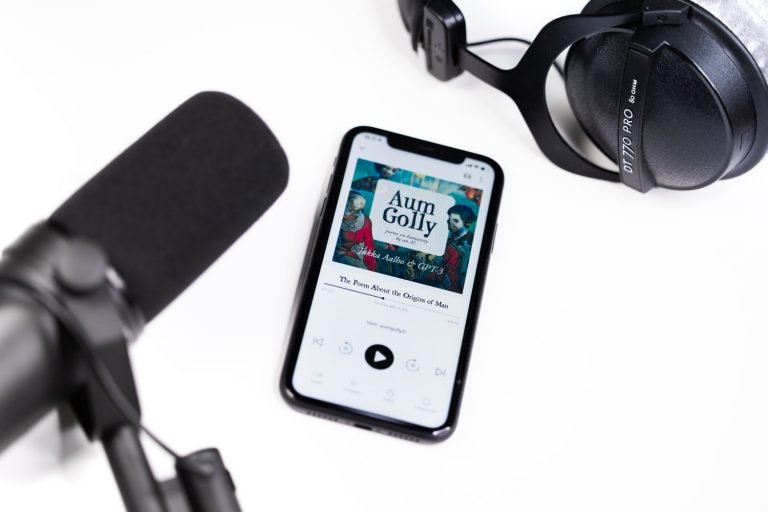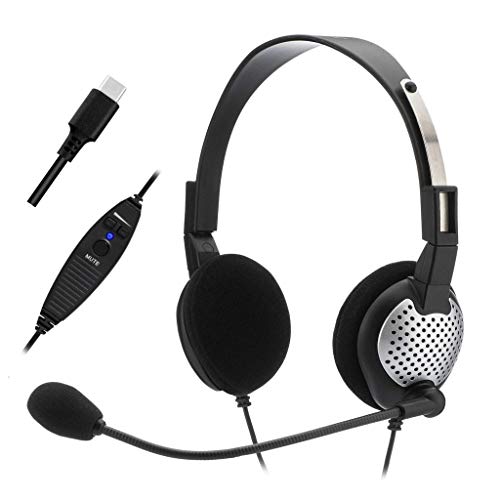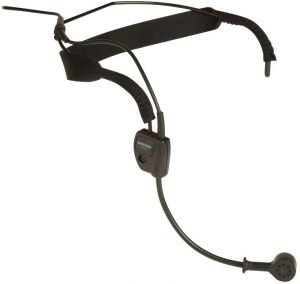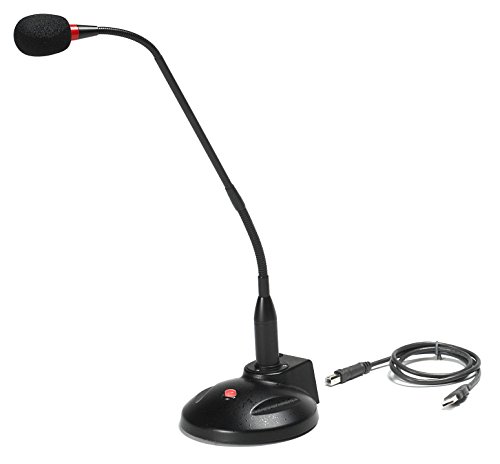As we live in a world where speech recognition is becoming more and more widespread, it’s important to ensure that the microphone you’re using can pick up your voice & convert it into text accurately.
The following article will go through various types of audio equipment used for dictating or transcribing audio and how they work with different environments.
We’ll also discuss the pros and cons of each piece of technology in order to help you make an informed decision when selecting a microphone for dictation or speech recognition.
There are numerous recording and dictation applications on the market, so it’s important to know exactly what each microphone is capable of doing before purchasing it.
The most common types of microphones for speech recognition use are condenser mics and dynamic mics.
Condenser mics are some of the most sensitive recording equipment on the market, allowing you to pick up even a whisper at 20-30ft away.
A typical condenser mic will use a large diaphragm to capture as much sound information as possible.
Dynamic microphones are a more common type of microphone for speech recognition, which generally provides a more accurate picking up of sounds in noisy environments because it uses a relatively smaller diaphragm.
———————————————————————————————————————————–
Related Guides:
- Best Small Diaphragm Condenser Microphones
- Best Microphone For Untreated Room
- Best Boundary Mic Reviewed
- Best ASMR Microphones
———————————————————————————————————————————–
Table of Contents
How to Choose a Mic for Speech Recognition
#1. Portability and size
You’ll need to purchase a microphone that is portable enough to fit into your laptop bag & can be transported with ease.
Portable microphones come in three main sizes:
Small Microphones (miniature) – are small enough to fit on the side of your laptop screen, or can be attached to the top of laptops. Handheld Microphones – handheld microphones are commonly used in lectures (usually with a clip) or can easily be carried around in a backpack.
Large Microphones – are typically not suitable for audio dictation type applications (so you’ll need a headset).
#2. Durability & Folding
You’ll need a microphone that is sturdy enough to withstand the rigors of everyday use. Look for microphones that can fold up or detach into two sections to make them easier to carry around.
#3. Recording
If you’re looking to record voice commands or dictation on your computer, look for microphones that are able to playback digital audio files back to the microphone itself. In this regard omni-directional microphones are ideal.
This allows you to capture everything that is said, without having to worry about editing the recording mid-way through the process.
#4. Noise Cancellation
Many of today’s popular desktop microphones have built-in noise reduction technology, which can help to improve audio quality and reduce background noise when performing speech recognition.
#5. Connectivity
Most modern microphones have built-in connectivity options, which allow you to plug the microphone into your laptop or desktop computer directly with the 3.5mm jack & USB connection. Other connectors are available on some models for additional functionality such as audio recording and distance feedback.
This allows you to connect any type of microphone to your computer without having to plug it in via a separate XLR cable (if required).
#6. Mic sensitivity
You’ll find a wide range of microphone sensitivity levels on the market that all have their uses in different situations. For example, if you’re looking to use your microphone in noisy environments or for dictation purposes you don’t need a very sensitive microphone.
If you’re looking to record high-quality audio on Google Drive for mixing music or voice-over then you will need a microphone with a higher sensitivity level.
List of 5 Best Microphones for Speech Recognition & Dictation
Last update on 2024-10-23 / Affiliate links / Images from Amazon Product Advertising API
1. Shure WH20XLR
- WH20XLR: Male 3-pin XLR connector with detachable belt clip
- Lightweight wireframe and elastic headband adjust for a secure, comfortable fit
- Extra-strong, small-diameter attached microphone cable resists breakage
- Collapsible microphone boom for easy storage and transportation
- Smooth, natural frequency response comparable to high-quality dynamic hand-held vocal microphones
Last update on 2024-10-23 / Affiliate links / Images from Amazon Product Advertising API
The Shure WH20XLR is one of the most popular headset microphones for dictation. The reasons for its popularity? It’s loud, it makes a great voice – even without any background noise, and it has great vocal clarity. It’s also very durable, and after so many years it still works like brand new.
You can use it in Skype, Google Voice, and other VoIP applications. It’s also compatible with a lot of different Skype audio software programs. This is such a great microphone for work or personal use. If you need to get a good dictation mic on the cheap (and something that you can count on), this is one of your best choices.
2. Sennheiser SC 75 USB MS (507086)
- Designed with Skype in Mind: For professionals using Skype for Business, who require an excellent hands-free communication solution
- HD Sound: Powered by a neodymium speaker for legendary Sennheiser HD sound to ensure a clearer and more natural audio experience
- Noise-Cancelling Technology: Filters out all unwanted background noise for crystal-clear conversations
- 2-in-1 Earpad Styles: Choose between soft leatherette or light acoustic foam padding for maximum comfort
- Bendable Boom Arm: Flexible arm ensures that your microphone stays in the perfect position and cannot be twisted out of place
Last update on 2024-10-23 / Affiliate links / Images from Amazon Product Advertising API
This is a great microphone because it has a lot of features. It comes with a digital USB device, which lets you use it as a headset or as a radio microphone. For $89 it’s a great option for someone who needs their phone to do voice recording. You don’t have to be completely tied into Skype or Google Voice – you can use this mic on any phone and get quality sound without compromising your budget. Plugin the USB device, and you can use the microphone on the go with ease.
3. Andrea Electronics C1-1022600-1
- High Quality Digital Stereo USB Headset
- Connection Type: Wired
- Sound Mode: Stereo
Last update on 2024-10-23 / Affiliate links / Images from Amazon Product Advertising API
If you want a high-fidelity computer headset with a mic for voice dictation, and you don’t need to be completely able to use it as a standard headset, this is your best option. It has a USB plug-and-play feature, so it works with most brands of computers/phones. The sound quality is pretty good – the background noise cancellation feature works well too. This microphone has a lot of great features for the price!
4. Nuance Dictaphone PowerMic II (44365)
- Mcirosoft Windows & Citrix Compatible
- Full Dictation Control at the Palm of your Hand
- High Quality Microphone for dictation
- Dragon Medical and Powerscribe Compatible
- Dictate and manage your application with one hand
Last update on 2024-10-23 / Affiliate links / Images from Amazon Product Advertising API
If you are looking for something that will do a lot more than just dictate at work, this is your best option. It can be used for everything – including video transcription, conference calls, and even things like audiobooks. The sound quality is amazing on this mic – it’s really clear and loud. (Some people say you can even use it as a headset mic if you wish.) This is a great microphone for someone who needs to be able to use it at school or on the go.
5. Sound Tech GN-USB-2 Stereo Microphone
- The GN-USB-2 gooseneck is specially designed for professional voice communications. The GN-USB-2 is compatible for applications such as Hands-free...
- Features: Plug n Play, Noise cancelling, On/Off LED indicator, Detachable USB A~B cable, 16 inch adjustable neck, Weight base with non-skid rubber...
- Specifications: Element: fixed-charge back plate, permanently polarized condenser, Polar Pattern: Hypercardioid, Sensitivity: -40 +/- 2dB(0dB=1V/Pa at...
- Operating Systems: Microsoft Windows 2000, Windows XP, Windows 7 and Windows 8 , Apple Mac Os9 and all OX X variations
Last update on 2024-10-23 / Affiliate links / Images from Amazon Product Advertising API
If you want a great mic that is affordable, this is your best option. It’s simple, but also effective. It comes with a cord that can go up to 10 feet long – or as far as you need to go to get the perfect sound quality. It picks up clear, loud sounds – no matter what you are listening to. It’s a great choice, and we are sure that you will love it.
This is the gooseneck microphone that you need in order to make your speech recognition software work as best as possible.
Related: Gooseneck Microphones Guide
FAQ:
Q: How do you activate speech recognition?
A: Newsletters,such as DeanBeat The wonderful,educational,and fun speakers at our events Networking opportunities Special members-only interviews,chats,and “open office” events with GamesBeat staff Chatting with community members,GamesBeat staff,and other guests in our Discord And maybe even a fun prize or two Introductions to like-minded parties
Q: How to activate speech recognition?
A: – Google: Say “OK Google, let me talk to Todoist” – Siri: End your command with “in Todoist,” for example: “Add [task name] in Todoist.” – Alexa: Refer to “my to-do list.” For example, “Alexa, what’s on my to-do list?”
Q: How do I Turn on speech recognition in Windows 10?
A: Option One: Turn On or Off “Online Speech Recognition” during Windows Setup Option Two: Turn On or Off “Online Speech Recognition” in Settings Option Three: Turn On or Off “Online Speech Recognition” using a REG file
Q: How to set up and use Windows 10 speech recognition?
A: Starting Speech Recognition. To launch the experience,just open the Start menu,search for Windows Speech Recognition,and select the top result. Turning on and off. To start using the feature,click the microphone button or say Start listening depending on your configuration. Using commands. … Using dictation. …








